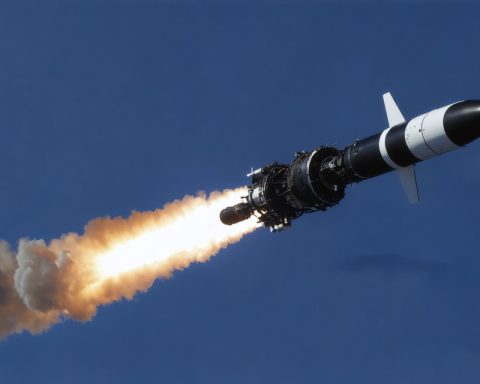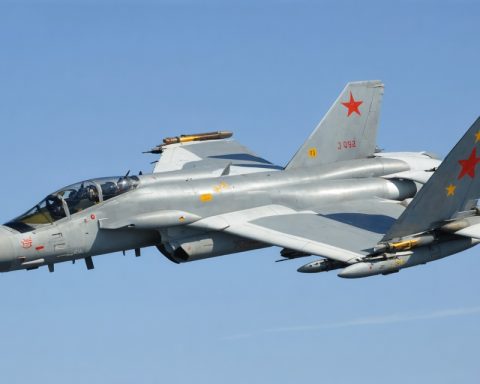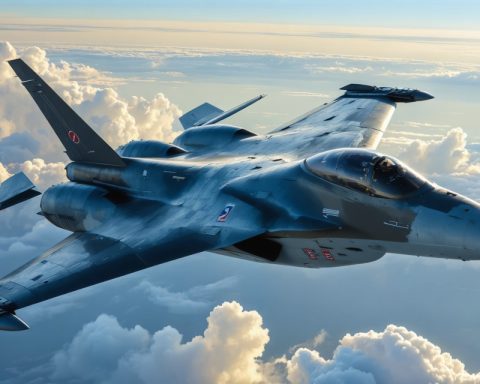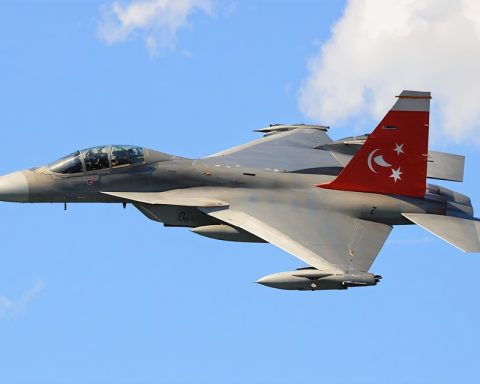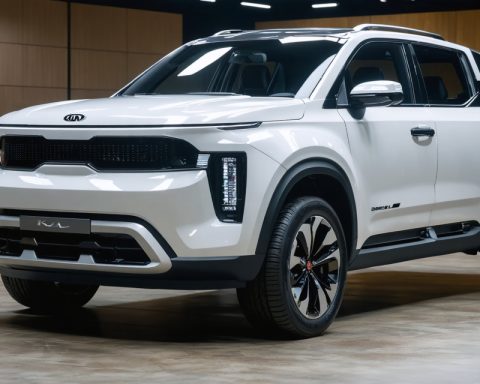Revolutionizing Indian Defense: The F-21 Fighter Jet
India is on the cusp of a transformative decision that could redefine its military capabilities. The proposed inclusion of Lockheed Martin’s F-21 fighter jet into the Indian Air Force marks a significant potential upgrade in the nation’s defense strategy. This enhanced version of the legendary F-16 aircraft promises to bolster India’s air superiority through its state-of-the-art innovations.
Unveiling Advanced Features
The F-21 is infused with cutting-edge technology aimed at revolutionizing aerial warfare for the Indian Air Force (IAF). It offers an F-35-inspired cockpit and integrates Active Electronically Scanned Array (AESA) radar for superior target acquisition and tracking in combat situations. Furthermore, its compatibility with IAF tankers delivers extended operational reach, positioning the F-21 as a technologically advanced option compared to India’s existing fleet of Russian MiG-29s.
Manufacturing the Future Locally
An intriguing aspect of Lockheed Martin’s proposal is the establishment of a manufacturing plant in India, partnered with Tata. This aligns perfectly with India’s “Make in India” initiative, aiming to enhance domestic aerospace capabilities and reduce reliance on foreign defense suppliers. Success in this venture could not only create thousands of jobs but also establish India as a crucial player in international defense manufacturing.
Strategic Impacts on the Horizon
If India opts to proceed with acquiring the F-21, the decision would signify a substantial geopolitical shift. The estimated $18 billion transaction could alter India’s defense alliances, fostering closer ties with the U.S. while reducing dependency on Russian military technologies. The F-21’s superior combat prowess against regional adversaries like Pakistan and China could redefine India’s regional strategy.
As the world watches, India’s next move in this defense transformation remains a topic of global significance, promising potential changes in the balance of power across the region.
The Environmental Impact of Modernizing Military Defense: The Case of India’s F-21 Fighter Jet
The potential inclusion of the F-21 fighter jet into the Indian Air Force not only possesses strategic military implications but also brings into focus the broader environmental consequences of such advancements. As military technologies evolve, the environmental impact of these developments becomes an increasingly important consideration, influencing the future of both regional and global ecosystems.
The aerospace industry is a significant contributor to environmental challenges. Aircraft production and operation are substantial sources of CO2 emissions, and the introduction of the F-21 fighter jet in India’s military arsenal would inevitably affect the region’s carbon footprint. The advanced technology and increased operational reach of jets like the F-21 mean higher fuel consumption and more intensive resource utilization. As India ramps up its domestic manufacturing capabilities in partnership with Lockheed Martin and Tata, the production facilities themselves may contribute to local environmental degradation unless sustainable practices are strictly implemented and followed.
Moreover, the establishment of a new manufacturing hub has implications for local ecosystems and biodiversity. Construction and operational processes could lead to habitat disruption and pollution unless carefully managed. Additionally, the increased military training and exercises associated with integrating new aircraft types could result in further environmental pressures, including noise pollution and potential risks of fuel spills, impacting both terrestrial and marine environments.
However, the decision to manufacture the F-21 locally as part of India’s “Make in India” initiative offers an opportunity to embed sustainable practices from the outset. By prioritizing environmentally friendly technologies and investing in green infrastructure, India can mitigate some of the adverse environmental impacts traditionally associated with aerospace manufacturing. Leveraging renewable energy sources for production, implementing rigorous waste management protocols, and ensuring compliance with international environmental standards will be crucial steps toward minimizing the ecological footprint of the defense modernization effort.
The implications of these developments extend beyond the environmental realm, influencing the future of humanity and the global economy. As nations strive to balance defense needs with environmental responsibilities, they set precedents that could accelerate the adoption of green technologies in other industries. The integration of sustainable practices in defense strategies could catalyze broader innovation, pushing the global aerospace sector toward more eco-friendly solutions.
Furthermore, fostering self-reliance through domestic production not only strengthens India’s defense capabilities but also promotes economic growth. By generating local employment and reducing foreign dependency, India stands to bolster its economic position, which could translate into increased funds for social welfare and sustainable development programs.
In the grand scheme, the environmental considerations associated with introducing the F-21 fighter jet reflect a collective responsibility toward future generations. As countries like India look to modernize their military capabilities, the accompanying decisions will have significant implications for the environment and the trajectory of global development, ultimately influencing the strategies humanity adopts in seeking harmony between technological advancement and planetary health.
India’s Game-Changing Move: The F-21 Fighter Jet and Its Potential Impact
In an ambitious step towards enhancing national defense capabilities, India is weighing the integration of Lockheed Martin’s F-21 fighter jet into its air force. This decision, if realized, promises a technological leap with far-reaching consequences on various fronts, from military strategies to economic repercussions. Here’s a closer look at the factors poised to shape this potential transformation.
Revolutionary Features and Innovations
The F-21 is not just an evolution of the F-16; it is a sophisticated machine designed to meet the unique needs of the Indian Air Force (IAF). Besides leveraging technologies inspired by the F-35, the F-21 introduces innovations like:
– Multi-Domain Operations: Enhanced communications systems allow seamless integration across land, sea, and air units, making the F-21 vital for network-centric warfare.
– Engine Upgrades: Improved propulsion systems increase speed and reduce fuel consumption, benefiting prolonged missions and versatility.
– Modern Avionics: Advanced onboard computing systems provide superior processing power for data analysis and tactical execution.
Economic and Manufacturing Advantages
Lockheed Martin’s joint venture with Tata to build a manufacturing facility in India promises significant economic benefits:
– Job Creation: Thousands of new jobs could emerge across the local aerospace industry, fostering skill development and economic growth.
– Export Opportunities: By establishing production capabilities, India could position itself as a global supplier for F-21 components, potentially leading to export revenue.
– Boost to “Make in India”: This collaboration underscores the ambitious “Make in India” initiative, boosting self-reliance in defense production and reducing foreign dependencies.
Security and Strategic Influence
– Shifting Alliances: By leaning towards U.S. technology, India might witness a shift in its geopolitical alliances, strengthening ties with Western allies while balancing its historic reliance on Russian hardware.
– Deterrence Capability: The F-21’s advanced combat features could serve as a significant deterrent against regional threats from neighboring countries, enhancing India’s strategic edge.
Market Analysis and Future Trends
– Growing Demand: There is an increasing need for modern, agile fighter jets globally, and India’s potential adoption of the F-21 could set a precedent for other nations considering similar upgrades.
– Sustainability Considerations: Integrating sustainable practices in the manufacturing process could appeal to environmentally conscious stakeholders, something Lockheed Martin may consider to align with evolving global values.
For those interested in learning more about the F-21 and related aerospace advancements, further information is available on the Lockheed Martin website.
India’s decision on the F-21 fighter jet remains a subject of keen international interest, with the potential to significantly alter the landscape of regional power dynamics and defense industry operations in years to come.


